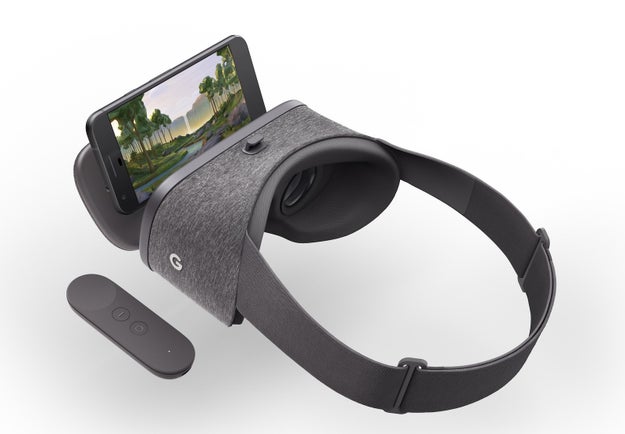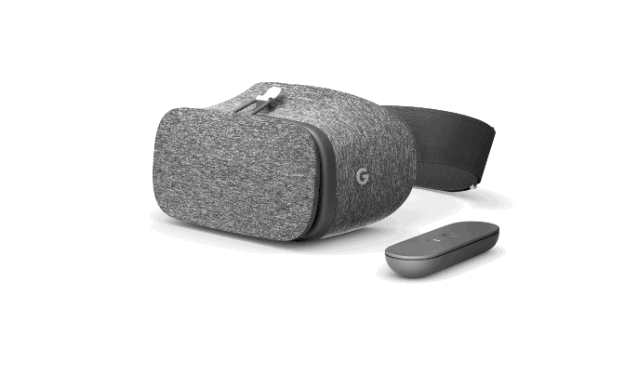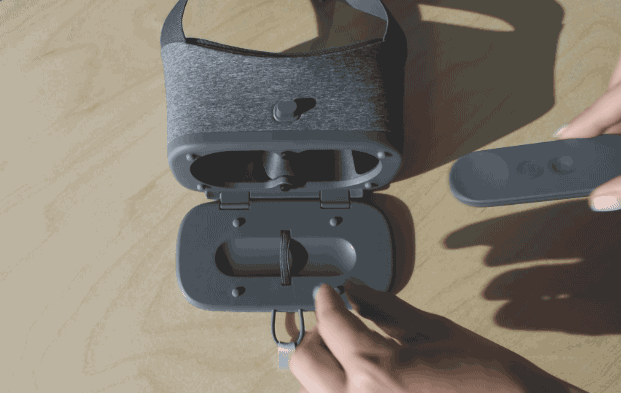The Daydream View is soft, lightweight, and $79.
Google just unveiled its first ever virtual reality headset. It’s called Daydream View.

Today, Google debuted Daydream View, its take on a virtual reality headset for smartphones, designed to bring 360º movies, games, and photos to life. The announcement follows the launch of the Daydream VR platform for Android, which was introduced at Google I/O earlier this year.
Daydream View is the successor to Google Cardboard, the dirt cheap, Android and iOS-compatible VR handheld introduced in 2014. Google's new headset, which competes with the likes of Samsung&039;s Gear VR ($100), Zeiss&039;s VR One Plus ($130) and LG 360 VR ($200), is more advanced than Cardboard in every way — but it still requires you to strap in a smartphone to work.
It offers a more comfortable, hands-free experience, and access to an entirely new platform focused on low latency head tracking (in other words, speeding up the time between when you move your head and when the screen adjusts to match that movement).
Daydream View will be available for pre-order on Oct. 20 through the Google Store and ships early November for $79. Before you mark your calendars, here&039;s what you should know about Google&039;s first attempt to strap an immersive photo and video machine on your head.
Nicole Nguyen / BuzzFeed News
The first device that will work with Daydream View is Google’s new Pixel phone.

Pixel, which starts at $649, is the first smartphone designed and manufactured entirely by Google, and will be the only “Daydream-ready device” at launch. Google is working with Samsung, HTC, ZTE, Huawei, Xiaomi, Alcatel, Asus, and LG on smartphones that will also compatible with the headset in the future. Unlike Cardboard, Daydream View will not be compatible with iOS devices.
There’s no pairing involved: the phone and headset will perform a “wireless handshake” automatically.

To use the headset, open the front portal using the elastic band, and plop the phone into the viewer. The phone will recognize that it&039;s in the headset and open VR mode automatically.
Users don&039;t have to waste time lining up the device with the lenses — capacitive pieces in the headset detect where the phone is and will auto-align the content that appears on the phone&039;s display.
The controller is stored inside of the headset itself.

Most apps are controlled by looking left, right, up and down. But for some apps, like Street View, you can point and click the controller to move forward. The remote is also used to get back to the homescreen, where all of your apps live.
The controller has a clickable touchpad, a smooth multi-purpose “app” button, and a recessed home button.
Nicole Nguyen / BuzzFeed News
Quelle: <a href="Here&039;s What You Need To Know About Google&039;s First VR Headset“>BuzzFeed
Published by